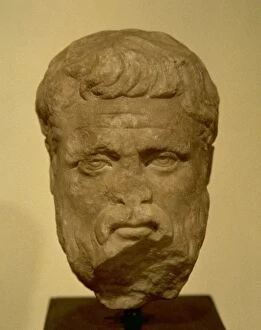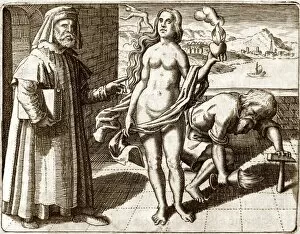Platonism Collection
Plato (428-348 BC), the legendary Greek philosopher, depicted in various forms through the ages: from his iconic busts (2nd-3rd C
All Professionally Made to Order for Quick Shipping
Plato (428-348 BC), the legendary Greek philosopher, depicted in various forms through the ages: from his iconic busts (2nd-3rd C. AD, Plato's Cave engraving B/W photo), to the vibrant colors of Plato's Cave oil painting, and even the philosophical depth of his Allegory of the Cave. His teachings, including the theory of Forms, continue to inspire thinkers like Democritus and later philosophers such as Marsilio Ficino (1433-1499). Contemplate the wisdom of Plato as we journey from the shadows of the Cave to the light of truth, guided by the philosophical processions of our ancestors, like the Bishop in front of the Church of S (engraving), and the enlightened visage of Plotinus (c. 350-70 AD).











